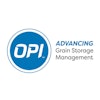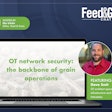Once again we are with Mike, the general manager of our mythical multistation grain cooperative located somewhere in the western Corn Belt. Today, Mike has wandered into an interesting conversation about subprime mortgages at the coffee shop. And what he hears is enough to make his coffee turn cold.
Mike rolled into the coffee shop parking lot past the crowd of pickups. Inside, farmers were scattered around debating the morning’s news when Mike overheard two of his co-op’s customers talking about the subprime mortgage mess and how those fancy financial firms couldn’t have known what they were doing, and worse, why they couldn’t figure out now what the losses might be.
He started to walk on by but slowed when Jack spoke: “I keep hearing those suits on TV talk about ‘mark to market’ and I remember Mike said at one of our co-op board meetings how great “mark to market” is. He was going on about his detailed financial reports and that he and the bankers always know exactly how strong the co-op is. Maybe we need to ask more questions at the next meeting. Sure hope we don’t get some bad surprises.”
Jack’s concern is understandable and he’s smart to ask questions. Financial statements should reflect economic realities for managers, investors and lenders, and “mark to market” accounting has been well-established in our industry for over a century as the tool to use. But recent bad publicity in the financial industry as a result of the subprime mortgage mess may be causing some to question “mark to market” accounting. Mike might find himself explaining not only to his co-op customers, but to his lender how marking grain inventories and contracts to market differs from whatever it is those NY financial traders have been doing.
Mike picks up his lunch and heads to the elevator to check in with Jeff, the co-op’s CFO and a veteran grain accountant. Mike wants to brush up on just how Jeff and his staff assign values at month end these days. Sitting in Jeff’s office, Mike tells him what he heard uptown and says: “We can’t have farmers doubting our books, and we’re deep in negotiations to add a second lender to expand our financing capability. I want to brush up on our procedures and how we’re different from the mess in the financial sector.”
Jeff understands the concern and walks Mike through the process. “Mark to market in grain accounting differs in two important ways from firms trying to value those bundled, collateralized debt obligations backed by a spider’s web of subprime mortgages: in liquidity, and in transparency.”
Liquidity: One of the best comments about the mess in the financial industry is, “Those guys confused financing with liquidity.” Some firms chose to own financial products for which there is no ready market. Press reports indicate that many of these assets can’t be sold quickly and in size at almost any price. Mostly size seems to be the main issue. The markets for these products are small, relative to the size of the inventories that financial firms are carrying. That’s almost never the case in the country grain industry.
Mike ponders for a moment and thinks “even large elevators such as ours can usually, if necessary, sell our inventory ownership to qualified buyers in short order.” It might be necessary to “eat” some extra freight and forego some anticipated basis appreciation to get the grain sold. But the cost of liquidating quickly would not begin to approach the huge (percentage) discounts that some firms are writing off in subprime products.
Transparency: In the absence of actual bids and trades for their financial products, some financial firms resorted to “marking to model,” estimating what market prices should be, if such a price existed. The statistics and math involved are pretty advanced and perhaps for that reason, the models were not well-vetted by folks inclined to ask whether the imbedded assumptions were prudent and sensible. In our business, on the other hand, determining assigned prices for marking positions to market is really market-based and is typically a simple process easily understood by anyone with a little business acumen. Usually it’s nothing more than adjusting published market bids or offers by freight costs; where both the market quotes and freight are verifiable and bids typically are quoted publicly.
The Co-op’s approach
Jeff pulls out the folder with last month’s financial worksheets and lays them on the table for Mike.
“Everything is well-documented; I don’t allow our folks to use guess-work,” says Jeff.
“We print and save all bidsheets at month-end for all markets and plug the values into a spreadsheet that adjusts for freight from our locations. This sets market value for our facilities.
We use published bids or actual month-end trades to establish all values. We can often sell at values well-above our buyers’ published bids (especially to ethanol plants), but we don’t know that for sure and don’t include that as a ‘hoped for’ gain,” he adds.
Jeff goes on to say, “we do not use ‘quick-ship’ premium bids to value inventory as it’s unlikely we could deliver any serious quantity.
We do not value inventory on premium rail markets for any quantity beyond for what we pay to secure rail freight,” he says. “Or we include a car cost if the rail market is clearly the best market.”
Jeff notes, “we price open sales at “FOB elevator, loaded-out” values. We price open purchases and inventories at appropriate discounts to those prices. This captures reserves for execution at shipping.“Some of our markets don’t publish bidsheets for documentation. We note those and make sure any values we establish are in line with surrounding markets,” he concludes.
This occasionally becomes an issue with “direct ship”purchases but the volume is small.
All option trades that correspond with farmer contracts are properly valued to match assets with obligations. All futures closed out gains & losses and Open Trade Equity is included to offset gains or losses in flat price on our inventory and contract positions.
“There’s more to it, but you get the picture,” says Jeff. “My objective as CFO is to provide a clear and accurate snapshot of our business at month-end as if we were selling the elevators. Lenders and boards of directors shouldn’t be given fantasy numbers. The only way to make sound business decisions is to know exactly what a change in the market has done, or will do, to your positions.
“That’s why I also run spreadsheets that can show me what changes in futures spreads, basis, or freight will do to our P&L. That part isn’t included in the financial reports but I always have it handy if you need it,” Jeff concludes.
Jeff recalled to Mike an article in Fortune from almost 40 years ago about how the bond firm Solomon Brothers marked inventories to market for daily trading P&L’s. A desk manager was asked how he kept his traders from assigning overly optimistic prices. The answer was simple: “From time to time, I pick an issue at random and tell the guy trading it to sell a million dollars worth at his assigned price. If he can’t, I fire him.” The problem these days isn’t with the practice of marking to market. It’s with how it has been abused in some sectors.


















